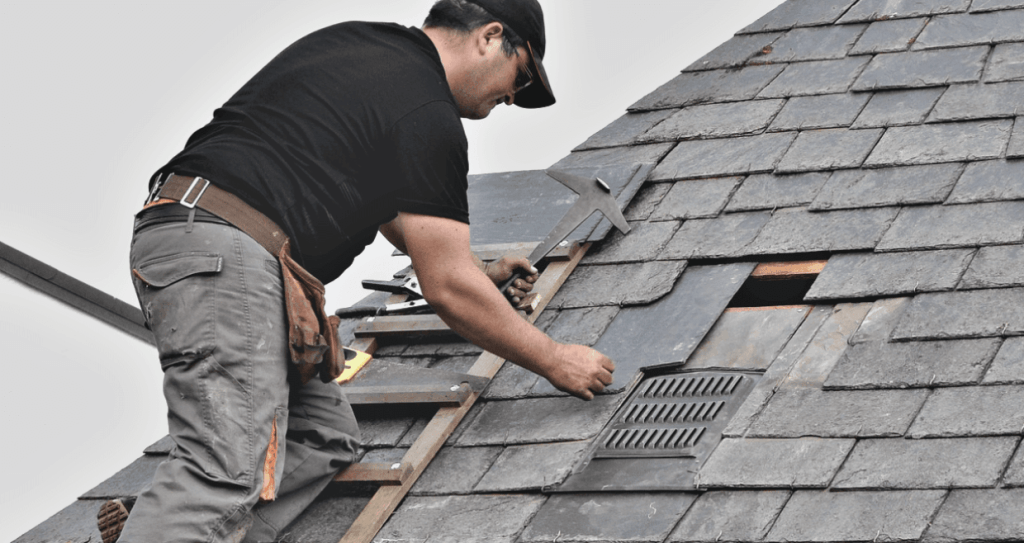Replacing roof shingles is a common home improvement project that can enhance the appearance and functionality of your roof. However, before you embark on this project, it’s essential to understand whether you need a permit to replace roof shingles in your area. In this guide, we’ll explore the permitting process, the factors that influence it, and when it’s necessary to obtain a permit for your roof shingle replacement project.

Understanding Roof Shingle Replacement
The Importance of Roof Maintenance
Your roof plays a crucial role in protecting your home from the elements. Over time, roof shingles can deteriorate due to exposure to weather conditions, such as rain, wind, and UV rays. When this happens, it’s essential to replace damaged or worn-out shingles promptly to prevent water leaks and structural damage to your home.
Factors Influencing Permit Requirements
Local Building Codes
The need for a permit to replace roof shingles primarily depends on local building codes and regulations. Different municipalities have varying codes that actively determine when roofing projects necessitate a permit. The factors that influence permit requirements include:
1. Scope of Work
In many cases, minor roof repairs or shingle replacements may not require a permit. However, if your project involves a significant portion of the roof or a complete roof replacement, a permit is more likely to be necessary.
2. Roofing Material
Some municipalities have specific rules regarding the type of roofing material you can use. If your shingle replacement involves changing the material (e.g., switching from asphalt to metal), a permit may be required to ensure compliance with local regulations.
3. Historic Districts
If your home is located in a historic district, there may be additional restrictions and guidelines governing roof replacement. In such cases, a permit may be required to ensure that the replacement shingles match the historical aesthetics of the area.
4. Environmental Considerations
Certain areas with sensitive ecosystems or watershed protections may have stricter regulations regarding roofing projects. If your property falls within such zones, a permit may be necessary to ensure that the project doesn’t harm the environment.
When Is a Permit Required?
Determining the Need
To determine whether you need a permit to replace roof shingles, consider the following factors:
1. Consult Local Authorities
Contact your local building department or permitting office to inquire about the specific requirements in your area. They can provide you with information on whether a permit is needed for your project and guide you through the application process.
2. Evaluate the Scope
Assess the scope of your roof shingle replacement project. If it includes a complete roof replacement, significant structural changes, or alterations to the roofing material, the likelihood of requiring a permit increases.
3. Check for Historical Designation
If your home is in a historic district, check whether your project falls under historical preservation guidelines. This may necessitate a permit to ensure the replacement shingles align with the historical character of the area.
4. Consider Environmental Regulations
If your property is located in an environmentally sensitive zone, research whether there are specific regulations that apply to your roofing project.
The Permitting Process
Applying for a Permit
If it’s determined that you need a permit to replace roof shingles, follow these steps to initiate the permitting process:
1. Gather Documentation
Prepare the necessary documentation, which may include detailed project plans, roofing material specifications, and any other information required by your local building department.
2. Submit the Application
Complete the permit application provided by your local authorities. Ensure that you provide accurate information and include all required documents.
3. Pay Fees
Pay any applicable permit fees. The cost of a permit can vary depending on the scope of the project and local regulations.
4. Inspection
After obtaining the permit, schedule inspections as required by your municipality. Inspections are typically conducted at various stages of the project to ensure compliance with building codes and safety standards.
Conclusion
Whether you need a permit to replace roof shingles depends on various factors, including local regulations, the scope of your project, and environmental considerations. It’s crucial to consult with your local building department or permitting office to determine the specific requirements in your area. By following the permitting process and complying with local regulations, you can ensure a smooth roof shingle replacement project that enhances the longevity and functionality of your roof while adhering to legal requirements.



Leave a Reply